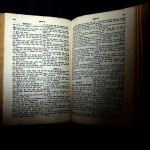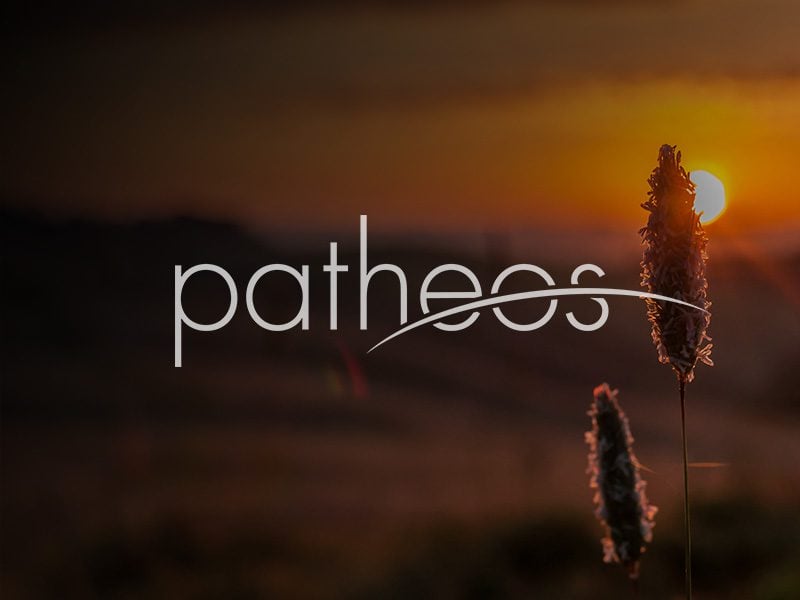In my last post I wondered aloud whether Nephi Sails the Ship of State. Since the Republic itself has a sequel, I hope it won’t be too much if I offer another Platonic reading of some of our Judeo-Christian scripture.
References to ‘intelligence’ and ‘intelligences’ in the D&C, Book of Abraham, and King Follett discourse have attracted and continue to attract a fair amount of attention. In the 19th and 20th centuries, not a few Mormons got themselves into trouble for attempting to explain what these esoteric terms mean. With its general paucity of information about pre-mortal existence, the Bible is not much help in answering the question.
Platonic tradition, on the other hand, whether of the Greco-Roman, Hermetic, Jewish, Gnostic, Christian, or Islamic variety, is quite rich in this area. For instance, in the writings of Plato himself, the soul is divided into different parts, the highest being the rational part (logistikon, logos) or mind/intellect (nous), and the soul is associated with the stars.
Souls are loosely associated with stars in the Myth of Er that concludes the Republic. After having chosen their next life and awaiting reincarnation from a take-off point in space (the Moon?), they are said to be transported in different directions into generation, like shooting stars. But what about the first incarnation? And where did the soul come from?
A stronger soul-star association is found in Plato’s Timaeus, sequel to the Republic, which begins with the tale of Atlantis and the claim that the city of Athens and the city of Sais in Egypt were both founded by the goddess Athena/Neith. An Egyptian priest tells this to Solon. Careful to specify that Athens was founded a full millennium before Sais, he compares the organization and learning of his city to that of Solon’s, noting that everything Athena taught the Greeks she also taught the Egyptians.
It’s not exactly clear how the beginning of the Timaeus relates to the rest of it which deals with creation. At any rate, following his formation of the world soul and the universe on the model of a divine pattern, the demiurge addresses his offspring, the young gods. He charges them with the formation of humans, animals, and plants, while he explains that he himself will provide the highest part of the human soul, to be located in the brain, with soul substance or seed also running down along the spinal column. The demiurge proceeds to stir up a batch of human mind in the same mixing bowl he used for the world soul, though the recipe isn’t quite the same. Once ready, he apportions the mixture so as for there to be one human soul to each star. Next he instructs the souls that if they prove just during their first, common incarnation he assigns them, they will return to their star; otherwise they will be reincarnated. The demiurge then sows them among the stars.
Writing sometime later, Philo takes the Timaeus and the Jewish creation account together. So the demiurge’s contribution to the human being occurs at Genesis 2:7, with the breath or spirit (pneuma) of life given by God to Adam functioning as the rational part of the soul, the mind/intellect.
Outside the context of Judaism and Christianity, it makes little sense for a Platonist to refer to the highest part of the soul as breath or spirit. Especially in Hermetic literature, the preferred term is mind/intellect. Though this term is found in the works of Plato and those of his more traditional Middle- and Neo-Platonic successors, it is not nearly as common as in the Hermetica.
Some of the Hermetic writings purport to have been originally composed in Egyptian and translated into Greek, badly. Even such Neo-Platonists as Iamblichus claimed that Egypt was the fount of Greek philosophy. In Christian hands, the Hermetica were read as Egyptian prophesies of divine truth. Throughout late antiquity and the Middle Ages, Hermes Trismegistus was believed to be a near contemporary of Moses and predecessor of Orpheus, Pythagoras, and Plato. Famously, when a Greek manuscript of the Corpus Hermeticum was rediscovered in 1460, Ficino was told to stop working on his Latin translation of Plato and devote his time to the writings of this much older Egyptian sage.
Together with the question of their native Egyptian heritage, the compositional date of the Hermetic literature has become a volatile issue in (post)modernity. In the early seventeenth century, Causabon argued that the Corpus Hermeticum was no older than Christianity let alone Plato. More recently, scholars like Walter Scott, Arthur Darby Nock, and A.-J. Festugière have also considered Hermes’ dialogues to be dependent on Plato’s. This was and probably still is the general academic consensus, at least among classicists.
From another perspective, however, that of Martin Bernal, for instance, who wrote Black Athena, and of afrocentric groups, the Corpus Hermeticum represents the philosophy that the Greeks appropriated from (black) Egyptians. Thus, to argue that these texts and the concepts contained in them are less Egyptian than Greek and were written/developed after Plato is to make a potentially racist statement, however unwitting.
Classicists and afrocentrists alike are foiled in the Book of Abraham, where it turns out that Platonic and Hermetic concepts of pre-mortal intelligences associated with the stars actually originated with the patriarchs. Abraham tells us that the Egyptians tried to “imitate” the patriarchal order (1:26). Not only does he have antediluvian records dealing with “the beginning of creation, and also of the planets, and of the stars” (1:31), Abraham learns about stars and intelligences first hand. God teaches him about them before he goes to Egypt so that he “may declare all these words” (3:15). Unfortunately, the text of the Book of Abraham breaks off before he arrives there, but in facsimile 3 we see him in Egypt “reasoning upon the principles of Astronomy.”











